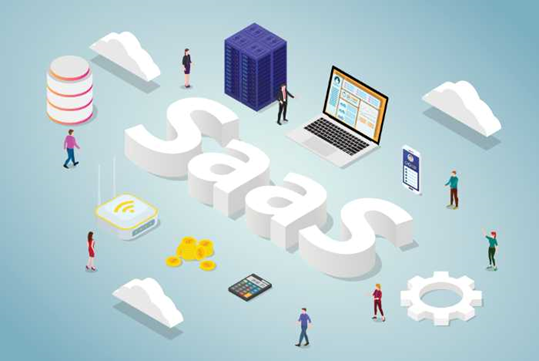What Is SaaS? Advantages and Disadvantages of SaaS. What’s the Difference Between Saas & PaaS | MVP Developer
What Is SaaS? Advantages and Disadvantages of SaaS. What’s the Difference Between SaaS vs. IaaS vs. PaaS?
SaaS is a software as a service delivery model. It is software offered by the provider on the web. This means software can be accessed from any device with an internet connection and web browser rather than just on the local machine where it’s installed, as with traditional software.

Advantages of SaaS
There are many reasons SaaS has become such a popular delivery model for software. Here are 10 key advantages of SaaS:
1. Reduced costs: SaaS pricing is often subscription-based, so it can save you money upfront compared to purchasing a traditional software license. There is also no need to invest in on-premises infrastructure, which can further reduce costs.
2. Increased flexibility: SaaS applications are delivered via the web, so they can be accessed from anywhere, at any time. This makes them much more flexible than traditional software, which is often tied to a specific location or device.
3. Scalability: SaaS applications are designed to be scalable, so they can easily accommodate changes in demand. This is ideal for businesses that experience seasonal spikes or sudden growth spurts.
4. Pay-as-you-go: SaaS pricing is typically subscription-based, so you only pay for what you use. This makes it easier to budget for SaaS costs and scale up or down as needed.
5. Reduced IT burden: SaaS applications are managed by the provider, so your in-house IT team doesn’t need to worry about installation, maintenance, or upgrades. This can free up valuable resources for other projects.
6. Automatic updates: SaaS applications are updated automatically by the provider, so you always have the latest version. This eliminates the need for manual updates, which can be time-consuming and error-prone.
7. Increased collaboration: SaaS applications are often designed for collaboration, which means multiple users can work on the same document or project at the same time. This can improve communication and increase efficiency.
8. Improved security: SaaS applications are typically hosted in the cloud, which offers increased security and redundancy compared to on-premises software. SaaS providers also have expertise in data security and can offer additional features, such as two-factor authentication.
9. Better disaster recovery: SaaS applications are hosted in the cloud, so they can be quickly recovered in the event of a disaster. This is often quicker and less expensive than trying to recover on-premises software.
10. Enhanced customer experience: SaaS applications are designed to be user-friendly and offer a great customer experience. This can help you attract and retain customers, as well as boost brand loyalty.
SaaS has become the go-to delivery model for software due to its many advantages. However, it’s important to be aware of the potential disadvantages before making the switch.
Disadvantages of SaaS
1. Limited control: Because SaaS applications are hosted by the provider, you have less control over the software than you would if it were installed on your own servers. This can make it difficult to customize the software to meet your specific needs.
2. Internet dependence: SaaS applications require an internet connection to function, so they may not be available during an outage. This can be a major downside for businesses that need 24/7 uptime.
3. Vendor lock-in: SaaS applications are often proprietary, which means they can only be used with the specific vendor’s software. This can make it difficult to switch providers if you’re unhappy with the service or the prices.
While SaaS has many advantages, it’s important to be aware of the potential disadvantages before making the switch. SaaS can be a great option for businesses that need a flexible, scalable, and cost-effective solution, but it’s not right for everyone. Be sure to weigh the pros and cons carefully before deciding if SaaS is right for your business.
What’s the Difference Between SaaS vs. IaaS vs. PaaS?
If you’re considering a move to the cloud, you may be wondering what’s the difference between SaaS vs. IaaS vs. PaaS? SaaS, IaaS, and PaaS are all types of cloud computing services. Here’s a quick overview of each:
SaaS: SaaS stands for software as a service. SaaS applications are delivered over the internet and accessed via a web browser. Common examples of SaaS applications include office suites, customer relationship management (CRM) software, and accounting software.
IaaS: IaaS stands for infrastructure as a service. IaaS is a type of cloud computing that delivers infrastructure, such as storage, servers, and networking, over the internet. IaaS is often used by businesses that need to scale their infrastructure quickly and efficiently.
PaaS: PaaS stands for the platform as a service. PaaS is a type of cloud computing that delivers a platform for developing, testing, and deploying applications over the internet. PaaS is often used by businesses that need a flexible and scalable platform for their software development.
The three cloud computing services vary in terms of layers of control. IaaS customers have the most control since they are in charge of their apps, data, runtime, middleware, and operating system. Customers that use PaaS, on the other hand, only administer their apps and data, whereas those who utilize SaaS are only responsible for their own data within the program.
If you’re considering SaaS for your business, contact us to learn more about our SaaS solutions. We’ll be happy to answer any questions you have and help you determine if SaaS is right for your business.
